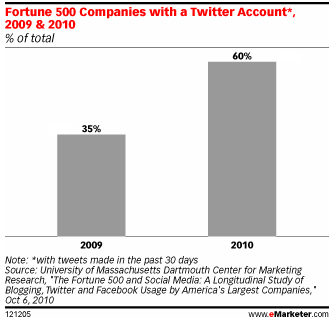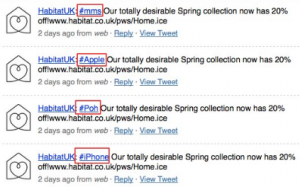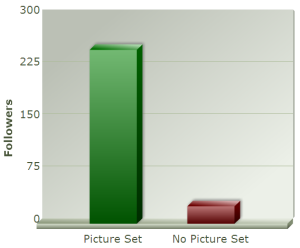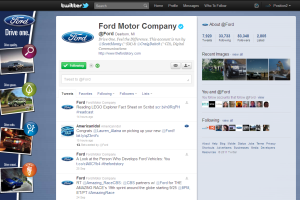Twitter Mistakes Businesses Should Avoid
The innumerable social media guide books out there typically advise brands on everything they need to know in order to survive and succeed in the digital space. Although they are usually very comprehensive and cover the basics, we strongly believe that every networking channel is unique and has its specific list of do’s and don’ts that need to be followed.
Twitter Mistakes Businesses Should Avoid
Author: Position2
The Challenges of Tweeting
 The innumerable social media guide books out there typically advise brands on everything they need to know in order to survive and succeed in the digital space. Although they are usually very comprehensive and cover the basics, we strongly believe that every networking channel is unique and has its specific list of do’s and don’ts that need to be followed.
The innumerable social media guide books out there typically advise brands on everything they need to know in order to survive and succeed in the digital space. Although they are usually very comprehensive and cover the basics, we strongly believe that every networking channel is unique and has its specific list of do’s and don’ts that need to be followed.
Online marketers focusing mainly on YouTube for instance, will have a completely different set of guidelines from marketers that primarily use Twitter or Facebook. Social media is a double edged sword; while the benefits are many, online marketing has not been without its challenges.
In the case of Twitter, it is a great platform for: a) customer service, b) posting regular updates about a brand or a particular product, c) bringing brands closer to their audience and d) companies looking to extend their reach and gain visibility.
According to the ‘The Fortune 500 and Social Media’ yearly report from the Center for Marketing Research:

- American Fortune 500 Companies dramatically increased their participation in Twitter in the past two years.
- Three in five companies had active Twitter accounts.
- The industries that were most strongly represented among the Fortune 500 Twitter accounts included retail; food, drug and CPG; and insurance.
The above numbers appear promising and show that companies are already using Twitter to bolster their brand. However, online marketers still hesitate to use the microblogging tool to its maximum potential or give up after the initial enthusiasm wanes out. This lack of confidence could stem from running into common Twitter-hurdles and making mistakes that can be easily avoided.
Unclear Objectives
 Rushing into Twitter, without having clearly defined objectives, comes first in our list of the ‘Most Common Twitter Mistakes to Avoid’. As an online marketer, knowing what you want from Twitter not just saves time, but also functions as a safety net for your brand. Making a list of what you expect to achieve for your brand via Twitter can help avoid:
Rushing into Twitter, without having clearly defined objectives, comes first in our list of the ‘Most Common Twitter Mistakes to Avoid’. As an online marketer, knowing what you want from Twitter not just saves time, but also functions as a safety net for your brand. Making a list of what you expect to achieve for your brand via Twitter can help avoid:
- Irrelevant Tweets: Twitter’s 140 character limit is all the more reason why companies should use this tool wisely.
Tweeting about something that has nothing to do with your brand increases the risk of losing followers and invites unnecessary backlash. This is what happened in the case of Habitat, a trendy furniture store in the UK. The company’s need for visibility did get them attention, although of the wrong kind. When the @HabitatUK account started to use #hashtags such as #iPhone, #mms, #Apple, which had absolutely nothing to do with furniture, decorating, or shopping, the company was accused of posting irrelevant content. The Twitter community was disappointed with Habitat’s incorrect use of hashtags to tweet information that was completely unrelated to the company. - Missing Out on Your Audience: Unclear goals mean you don’t know who to follow. Simply tweeting without having a specific audience in mind not only wastes time but also translates into unproductive use of the microblogging site. Brands that jump in without thinking about who to follow either end up following the wrong audience or have trouble going further.
- Getting Left Behind: One of the biggest reasons why many brands get abroad the social media bandwagon is because they want to stay ahead of the competition or avoid getting left behind. This is true especially in the case of Twitter. However, ambiguity regarding your goals or the ‘tweet first, decide later’ approach simply increases the possibility of getting left behind. How? When you don’t know what to tweet, you won’t know how to proceed!
A Half-Baked Profile Page
Why is it important to have a well-thought-out Twitter profile? One of the first things that potential followers will check out is your brand’s Twitter profile page. Half-hearted attempts at designing a profile page gives out the message that you were either in a hurry to start tweeting or simply didn’t consider it important enough to invest time on. Setting up a detailed profile on Twitter is simple, takes very little time and effort and gives people some sort of context on what your brand does. Having trouble getting started? Here are a few pointers that should help:
- Upload that Picture: The default Twitter egg for a profile picture will hardly come across as ‘egg-citing’ to your followers. Recent research from Dan Zarrella, author and Hubspot’s ‘social media and viral marketing scientist,’ shows that Twitter accounts with profile images attract more followers. We think this is especially true in the case of brands that are new to Twitter and are in the process of building their follower count and want to gain visibility. This, however, does not mean uploading an irrelevant image or having a cartoon character representing your brand. The ‘avatar’ photo should represent your brand. Our suggestion? Going with the company logo is good choice.
- Custom Twitter Background: Having a custom Twitter background will help your brand stand out from the crowd. While some brands’ background is generic and says nothing about their business, the others try to include too much, making it appear chaotic. The @Ford account is the great example of how a company can achieve the perfect balance between too much and too little background content.
- Filling Out the Bio: In addition to uploading a relevant profile picture and having a well-laid out background, it is important to take time off to fill in the ‘bio’ field. A brief description of the company’s area of expertise, along with some contact details will give potential followers the required information about the brand. Also, don’t forget to include a link to the company’s website.
Hibernating vs. Hyperactivity
Many companies start off with great enthusiasm and run out of steam somewhere along the way. The abrupt silence could result in reducing a brand’s follower count and may lead to frustrated customers probably wondering about the sudden inactivity. The other extreme is when marketers shower followers with an overload of tweets. For an online marketer, striking the right balance between hibernation vs. being overactive on Twitter is all about:
- Timing: Space out your tweets in a digestible format for your followers. Tweeting at regular intervals gives brands larger reach and makes them look professional. Other benefits include less ‘noise’, reduced probability of losing followers and giving people enough time to read and assimilate information.
- Avoiding Spam: Sometimes attempts to expand reach and promote a product or service can go out of control and turn users off. Sending direct messages (DM) when not required, simply retweeting others in your industry, sending @ messages to someone you don’t know or trying to sell something to the wrong audience are examples of how you can spam innocent social media users. Japanese Coffee Company, UCC, tried to rush into Twitter by randomly broadcasting their messages to unsuspecting social media users during the launch phase of their ‘Good Coffee Smile’ campaign. The company’s unwise use of an automated program that sent an @ reply to everyone who tweeted keywords like ‘coffee’ or ‘contest’ was not well received. Additionally, the company overloaded users with a preset advertisement tweet related to their contest, which invariably resulted in Twitter users complaining that they were being spammed by UCC. Our advice? Take your time, figure out what you wish to convey and who you wish to target in advance, and use the DM, @ and retweet commands judiciously.
- Engaging: Too much sales talk and too little engagement can cost precious followers. Marketers need to understand that, in order to connect with customers, it is important to actually engage with them first. While it is tempting to give a Twitter monologue without engaging in a dialogue, being your own brand ambassador all the time will encourage your users to label you as ‘boring’ and move on. Keep in mind, Twitter is all about give and take; you need to show your followers you are interested in them just as much as they are in you.
Are You Monitoring Your Twitter account?
 Twitter, being one of the most active social media channels in the networking space, needs to be monitored closely. Companies using Twitter as an integral part of their marketing plan need to invest in social media monitoring tools such as Brand Monitor because:
Twitter, being one of the most active social media channels in the networking space, needs to be monitored closely. Companies using Twitter as an integral part of their marketing plan need to invest in social media monitoring tools such as Brand Monitor because:
- Twitter is Where Most of the Conversation Takes Place: The real-time nature of Twitter makes its all the more necessary for companies to monitor the influence of their brand and measure the impact of their messages. Also, most people who want to talk about a brand or a campaign take to Twitter because it’s the ideal platform to start a trending topic (by creating #hashtags). Twitter is where most of the conversations take place; if you aren’t there watching, then you could be missing out on valuable information about your business.
- This Reduces Spam: As your brand’s presence on Twitter continues to grow, the possibility of unintentionally spamming users increases. Listening to your customers, finding out what type of content they appreciate etc. will prevent you from spamming their Twitter accounts with irrelevant content.
- It Helps Decide if Twitter is Where you Should be: When it comes to deciding between the various networking channels out there, marketers are often spoilt for choice and are not sure what works best for their brand. We suggest analyzing the conversations, and finding out what networking platform has the maximum volumes pertaining to your brand. If Twitter is not where you should be, then this is possibly why your efforts at microblogging are not yielding the desired results.
Conclusion
A recent study by eMarketer shows that, on an average, 30.6 percent of Twitter users follow between one and five brands. With the growing number of Twitter users, we only expect this number to increase in the next few years. For social media marketers that mainly use Twitter, the future looks promising. While it is great that the microblogging site is being perceived as a serious online marketing tool, the ride on the Twitter bandwagon can sometimes get bumpy. Also, in the rush to tweet, brands sometimes tend to overlook the basics and are faced with roadblocks that could have otherwise been avoided.
Our research shows the most common Twitter mistakes can sometimes cost companies followers, besides affecting the brand image. It is natural for even the most social-media savvy brands to slip-up once in a while. Take a deep breath… Twitter can be one of the best things that happened to your brand or business. We believe that there is nothing a little careful planning and monitoring cannot overcome. This, along with optimum engagement, scheduling of tweets, and having a well-thought out Twitter profile page will ensure that your ride is smooth and you don’t press the panic button too often.
Twitter is powerful marketing tool that allows brands to connect, share, develop relationships and enhance their sphere of influence. A few hurdles along the way shouldn’t deter marketers from using Twitter to its maximum potential.
Article Source:
Twitter Mistakes Businesses Should Avoid
About the Author
Brand Monitor
366 Cambridge Ave.
Palo Alto, CA 94306
Phone: 650-618-8900
Toll-free (US): 800-725-5507
http://brandmonitor.position2.com/


